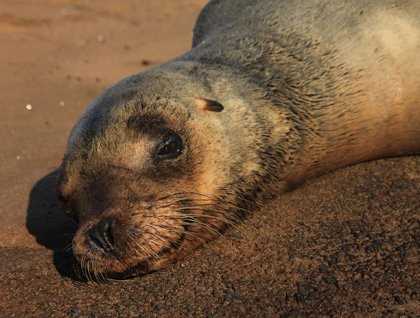Floreana, also known as Charles Island or Santa Maria, is a peaceful island in the southern area of the Galapagos Archipelago. It is one of the four inhabited islands, and it was the first one to be officially inhabited by Ecuadorians, when Ecuador took possession of the islands in 1832. Only three years later, the famous naturalist Charles Darwin visited Floreana Island, and after him, many more visitors were part of a unique and bizarre human history: from marooned whalers to prisoners and colonists, and from a toothless dentist to a self-proclaimed empress.
The island has many visitors sites, and one of them is Punta Cormorant, not named after the Galapagos flightless cormorants, as these endemic birds are not found in this location, but rather after a British Navy ship, the HMS Cormorant, that was launched in 1877 and assigned in 1886 to the Pacific Station (an area along the western coast of South America and extending to the Galápagos Islands and possibly beyond).
This site is well known for a fascinating beach of olivine sand. We disembarked here at 6:30am and walked along a brackish lagoon surrounded by endemic and native vegetation, which had over twenty flamingos! Some of them were feeding in the lagoon, while other ones were found far away from the trail, probably nesting. Soon after, we arrived to a second beach of incredibly fine, white, coralline sand; a favorite nesting site for the green sea turtles. Our photographers had the chance to go on a nature photography walk, capturing the best light of the day, and of course a fascinating landscape and the flamingoes on the lake.
While visiting this site, our guests had the chance to learn about the ecosystem restoration program that is conducted here, by the Galapagos National Park Services in collaboration with the Charles Darwin Research Station, and with the help of the Lindblad/National Geographic Fund.
After the walk and a well-deserved breakfast, our captain repositioned the ship near Champion Islet. This volcanic cone, now eroded, with rocky shores, is home to the remnant population of the rare Floreana mockingbird, which was driven to extinction by cats, rats and other introduced predators on the main island. We explored the islet by Zodiac, in the search of these rare and unique birds, which inspired Darwin in the formulation of his theory of evolution through natural selection, and the rest of the morning we devoted to enjoying the underwater realms, either from our glass bottom or by snorkeling. We enjoyed the crystal clear water with hundreds of fish of different species, some sea turtles and even sharks, and of course the company of some playful young sea lions that gave our guests the time of their life!
At lunch time, and just before reaching our next visitor site, we were fortunate to see a humpback whale breaching only few hundred yards away from the ship, so immediately we took out our Zodiacs with some adventurous guests to get a closer look. It was an exciting ride, and we were able to get close enough to see that it was a female humpback whale with a younger one.
The rest of the afternoon was spent exploring the area in Zodiacs and kayaks, before finally landing at the famous Post Office Bay. First mentioned in 1793 by British Captain James Colnett, the Post Office Bay tradition consists of depositing postcards or letters without stamps in a wooden barrel, with the hope that next visitors will go over the correspondence and eventually collect and hand deliver them. So far, thousands of letters and postcards have reached their destinations in this way, and we are proud to say that the older Post Office system established in the South Pacific still works nowadays!
Tomorrow we will offer a different experience, as we go on the search of the famous giant tortoises!







